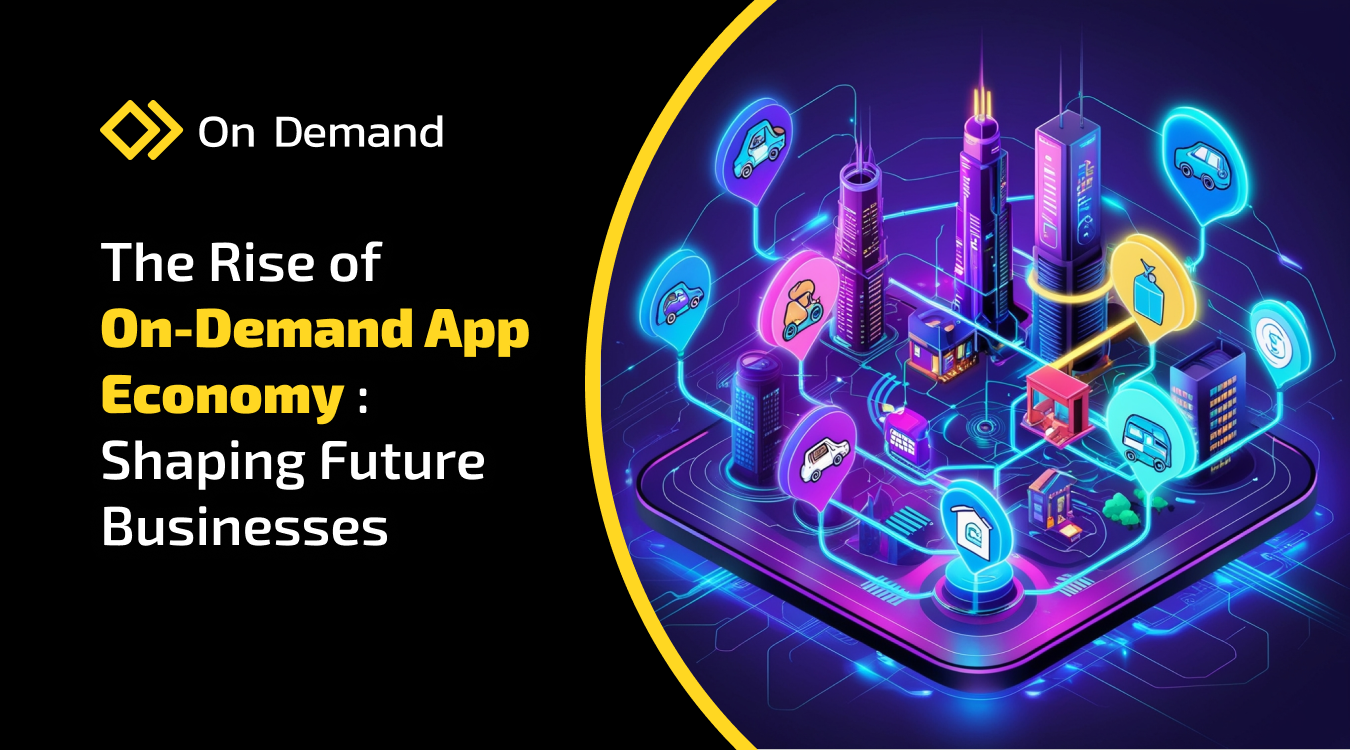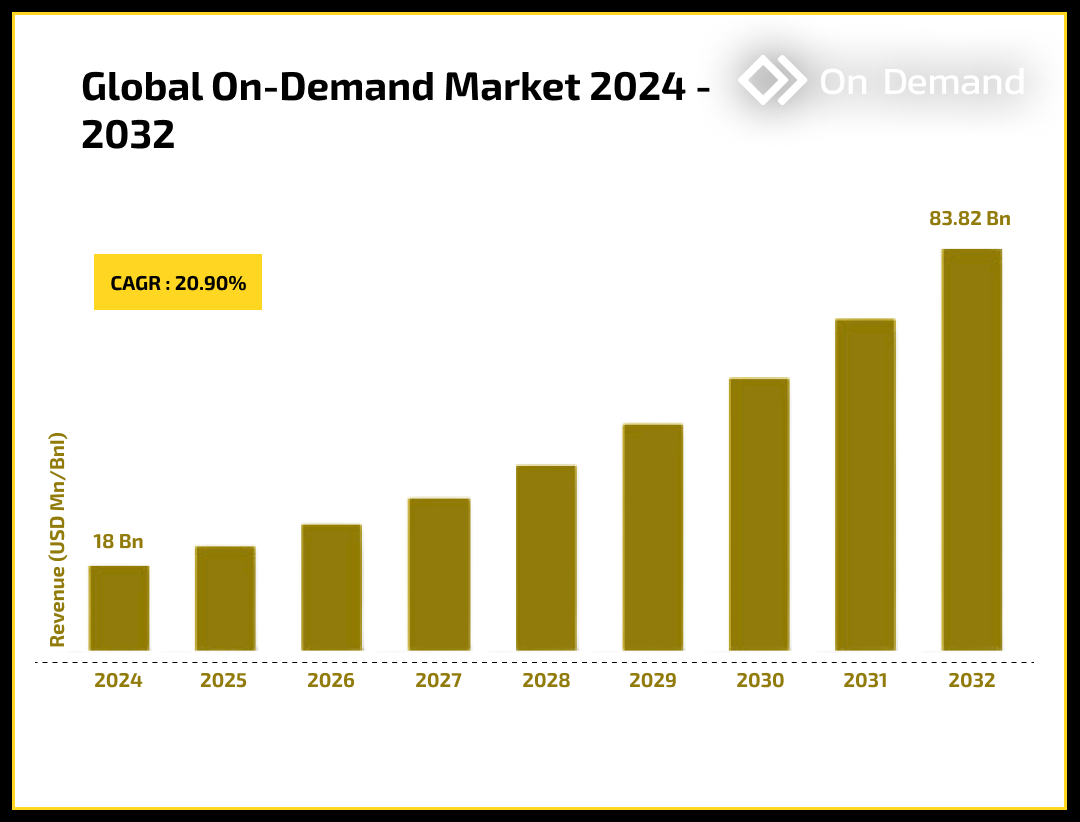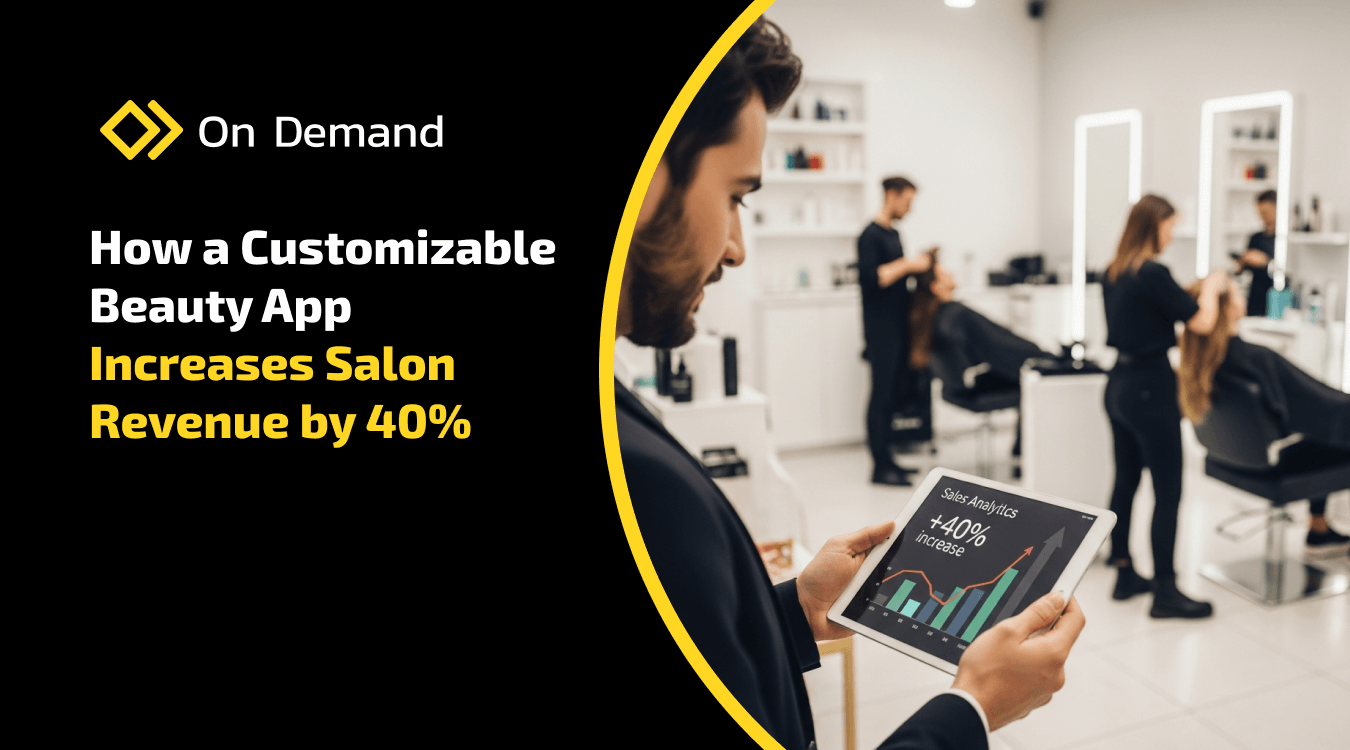Posted At: Dec 05, 2024 - 1,699 Views
10 minutes to read

The rise of the on-demand economy has fundamentally changed the way in which consumers buy goods and services, and in doing so brought convenience and immediacy to the forefront of the experience. There has been a shift in large part to on-demand service solutions powered by technology that render instant services as per the growing needs of consumer brands. In this deeply illuminating blog, we examine the origin of the on-demand economic ecosystem, its effect across various industries, and the technological leaps propelling it toward its current form.
The blog also surveys the prices and challenges of developing such applications by businesses globally, and how the ways in which companies are trying to capitalize on the incredibly lucrative opportunity through solutions like fuel delivery and car wash on-demand apps.
The Evolution of the On-Demand Economy
The underlying economic activity rooted in the use of digital marketplaces to serve consumer demand via the on-demand access to goods and services is known as the on-demand economy. With smartphones and the internet made abundant globally, consumers can easily get services like ride-hailing to food delivery on the go, making this model gain huge momentum.

Based on multiple market reports from market analysts, the on-demand app industry is expected to reach $27bn annually by 2027 with 49 percent of the consumers being Millennials. This figure emphasizes how much the on-demand app services are growing as well as how ubiquitous they have become for younger demographics.
Transformative Impact Across Industries
With the on-demand business model, many industries have been disrupted by delivering services as per consumer demand of instant services.
Transportation
Uber and Lyft have changed how people think about and use taxis in the crowded urban areas of the world by providing an on-demand ride-hailing platform . Requiring flexibility and user control, their services (personal transportation) redefine the utility of these on-demand app-based services.
Food Delivery
Today, DoorDash and Grubhub have completely transformed the food industry by allowing consumers to order from several restaurants with a fingertip on their phones. It expanded culinary options and is now setting new levels of convenience, with the help of these on-demand service solutions, including the beginning of on-demand grocery shopping services.
Healthcare
Telemedicine platforms like Doctor on Demand facilitate virtual consultations, allowing patients to receive medical advice without leaving their homes. It has been a great boon for patients as such utilization of on-demand app service significantly improves the effectiveness and accessibility of healthcare.
Entertainment
Streaming services such as Netflix and Spotify have redefined media consumption by offering vast libraries of content accessible anytime, anywhere. A modern consumer’s need for ‘personalized, immediate entertainment’ is catered to by this on-demand business model.
The Role of On-Demand Economy in Business Transformation
This is more than a trend, it’s a fundamental change in business and value adaptation for consumers. Adapting to on-demand business models has become a must for businesses as they do not have to delay taking their customers’ demands any further, given that they need to address the immediacy, flexibility, and customer-centricity aspects. Here's how the on-demand economy is reshaping traditional business practices and driving innovation.
1. Streamlined Operations and Efficiency
Businesses can leverage on-demand service solutions, to connect with the end consumer directly via digital platforms and streamline their operations. It also removes intermediaries, cuts operational costs, and shortens the service delivery, period. Logistics in the transportation field have been redefined with such efficiency that the system of Uber's companies that redefined logistics in the sector, is green, responsive, and scalable.
2. Enhanced Customer Engagement
Direct and frequent interactions with consumers are a key aspect of the on-demand app business model. By providing real-time tracking, instant notices, and quick customer support, businesses develop better relationships with their customers. It also engenders loyalty and contributes valuable insights with respect to continuous improvement.
3. New Revenue Streams
Opening up additional revenue opportunities through adopting on-demand app services. With subscription models, in-app ads, and dynamic pricing, businesses have the advantage of multiple income sources. For example, on-demand food delivery platforms will usually combine delivery fees, subscription plans, and restaurants’ partnership revenue as a way of getting a new stream of consistent revenue.
4. Adaptability to Market Demands
The on-demand business model affords unparalleled flexibility to businesses to quickly adjust to changing consumer preferences and market dynamics. This caters to industries that need to be agile, such as healthcare and retail.
5. Global Reach and Scalability
The integration of the apps for instant service delivery allows businesses to have their operations outside of local markets. Thanks to apps the scaling process is seamless, so companies do not need to grow physically as they can cater to a global audience. One hallmark of a successful on-demand app service is its ability to scale without compromising on quality.
6. Data-Driven Decision Making
Businesses make use of the user data gathered on on-demand platforms to make decisions. Thus, companies can analyze and optimize their offerings, forecast demand, and improve service quality by analyzing consumer behavior patterns. The modern on-demand economy is built on this data-driven approach.
Ready to partner up with a professional on-demand app developer based in India? ( Contact Us )
Technological Advancements Driving the On-Demand Economy
Several technological innovations have been instrumental in the rise of the on-demand economy:
- Mobile Technology: With smartphone adoption spreading across the globe, instant service delivery apps have become a basic part of daily living due to their ability to offer simple services to users in an instant manner.
- Geolocation Services: The technology of GPS allows the consumers to receive the services of the on-demand app services on demand that evokes the consumers with the providers who give such services on the location that can be same or nearby, it optimizes the efficiency so as to reduce the wait time.
- Payment Integration: Transactions are faster and more secure in the apps with the in-app payment system and the users are happier with the trust.
- Artificial Intelligence: User preference is analyzed by AI algorithms, and then personalized recommendations are given which in turn improves overall user experience.
Cost of Developing On-Demand Applications
The building of an on-demand app entails costs that can vary vastly depending on the functionality involved and the location. For reference, below is a detailed breakdown of development costs, broken out by complexity and regional rates in India, the US, and the UK.
Development Costs by App Complexity
App Complexity | India (USD) | United States (USD) | United Kingdom (USD) |
Simple | $5,000 - $10,000 | $16,000 - $32,000 | £20,000 - £50,000 |
Moderate | $10,000 - $50,000 | $32,000 - $48,000 | £50,000 - £100,000 |
Complex | $50,000 - $150,000 | $72,000+ | £100,000+ |
Ready to partner up with a professional on-demand app developer based in India? ( Contact Us )
Development Costs by Region
Region | Average Hourly Rate (USD) | Total Development Cost for Standard App (USD) |
India | $15 - $50 | $10,000 - $50,000 |
United States | $100 - $150 | $50,000 - $150,000 |
United Kingdom | $70 - $120 | $40,000 - $120,000 |
Sources:- Helpful Insight Solution and Copper Digital
Conclusion: A Promising On-Demand Future
New technologies like Generative AI and IoT Services will enable further development of instant service delivery apps in the on-demand economy to grow. Businesses following on-demand business models will be in a better position to provide customers with immediate and personalized services as expectations from consumers continue to evolve.
The rise of the on-demand economy has completely redefined consumer behavior and industry expectations. Through increased technological advancements coupled with knowing regional cost dynamics, businesses can take advantage and successfully traverse this landscape taking advantage of the on-demand app services.
Frequently Asked Questions (FAQs)
1. What is the on-demand economy and why is it important?
The on-demand economy refers to the digital marketplace where consumers can access goods and services instantly via apps.
- It's fueled by consumer demand for immediacy and convenience.
- It empowers businesses to serve customers on demand, driving growth and efficiency.
- Key industries like transportation, healthcare, and food delivery are being reshaped by this model.
2. How do on-demand apps impact consumer behavior?
Consumers now expect services delivered quickly and conveniently, fueling the rise of instant service delivery apps.
- This model has shifted expectations toward real-time access to services.
- On-demand solutions like Uber or DoorDash cater to immediate needs, increasing consumer satisfaction.
- Customers are more likely to favor businesses that provide fast, flexible service options.
3. What are the key technological innovations behind the on-demand economy?
Mobile technology, geolocation services, AI, and secure payment integrations are key drivers of the on-demand economy.
- GPS allows for accurate, on-time service delivery based on the consumer's location.
- AI helps businesses personalize services, enhancing the customer experience.
- Payment integration ensures secure and instant transactions, boosting trust in on-demand apps.
4. What industries have been disrupted by the on-demand economy?
Several sectors, from transportation to healthcare, have been transformed by on-demand business models.
- Transportation: Ride-hailing platforms like Uber revolutionized urban travel.
- Healthcare: Telemedicine platforms enable virtual doctor consultations, increasing access to healthcare.
- Food Delivery: Services like DoorDash have expanded culinary options and convenience for consumers.
5. How can businesses benefit from the on-demand business model?
Businesses can achieve greater operational efficiency, customer engagement, and revenue streams through the on-demand model.
- Streamlined operations by cutting intermediaries and reducing delivery times.
- Enhanced customer engagement through real-time updates and better support.
- New revenue opportunities via subscription models, ads, and dynamic pricing.





